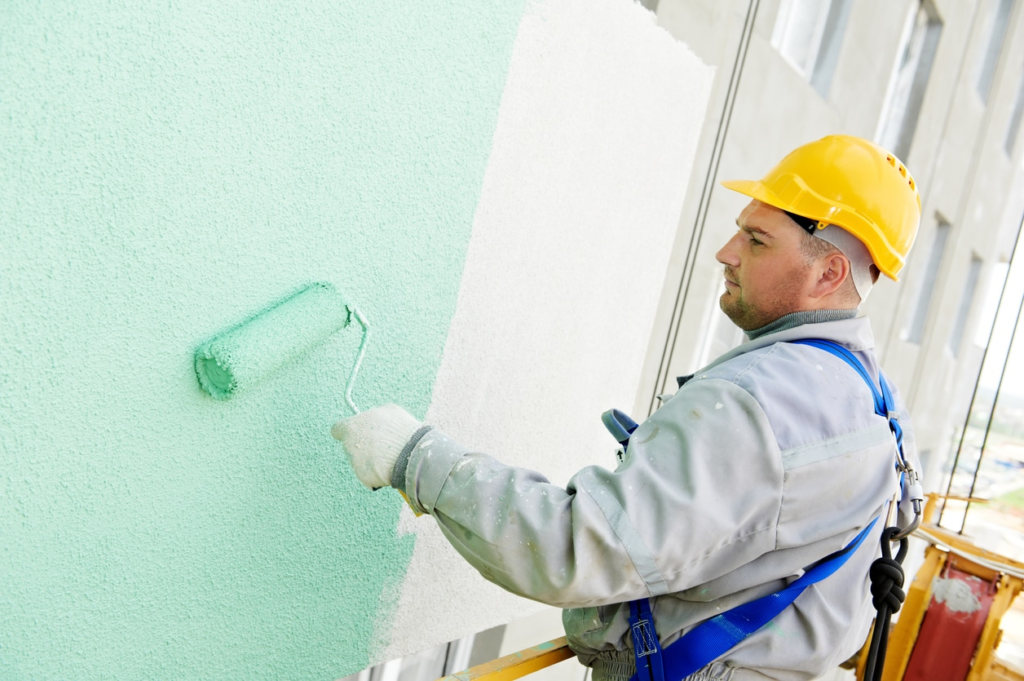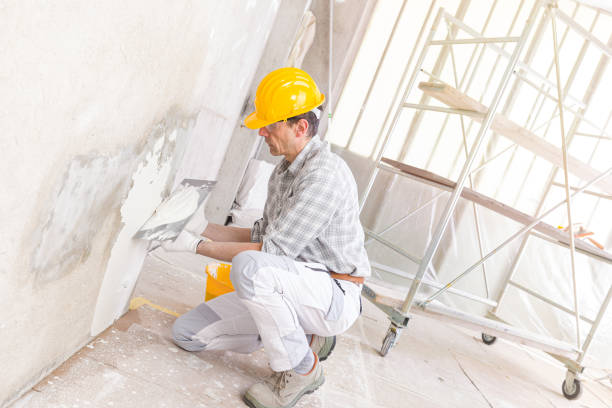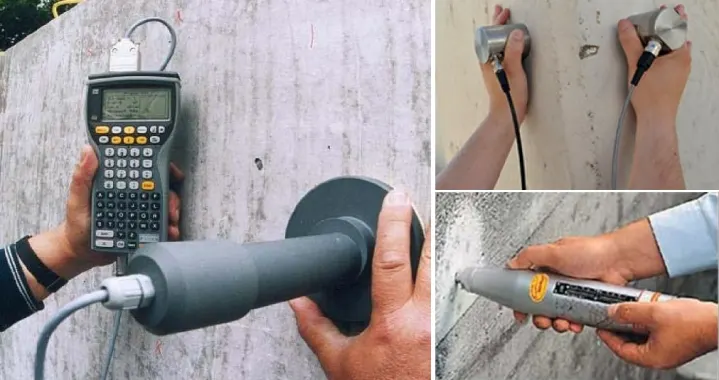Helper Construction Painter ( 6 month course)
Helper Construction Painter click here
Brief Job Description
This person is responsible for handling, shifting and storing of materials, handling tools and tackles
relevant to painting, identification and preparation of paints and surfaces, mixing of colours and paints,
providing support in setting & layout and erection and dismantle of temporary scaffold.

Personal Attributes
The individual is expected to be physically fit and able to work across various locations in extreme
weather/site conditions. The person should be able to perform efficiently within a team, handle the various painting tools and materials and work responsibly.
Identify, handle, store & use basic tools, equipment and paints and related painting materials
Description
This unit describes the skills and knowledge required to identify, handle, store and use basic tools,
equipment and paints and related painting materials.
Scope
The scope covers the following :
Identify, select & use basic tools & materials related to painting works
Handle and store paints and related painting materials
Dispose waste safely as per organizational guidelines
Elements and Performance Criteria
Identify, select & use basic tools & materials related to painting works
To be competent, the user/individual on the job must be able to:
PC1. identify and select common painting materials used for relevant work such as thinner,
turpentine oil, sealing compound, various paints and its additives and caulking putty
PC2. classify different materials based on their type and usage
PC3. identify basic tools used for painting works such as hand tools like rollers, brushes, paint
bucket, sponges, dusting brush, tack rags, paint stirrers, strainers, sand paper, masking tape
& wall scrappers, measuring tools and power tools
PC4. check for serviceability/safety of tools and equipment and report faults to superiors
PC5. select and use appropriate hand tools relevant to the task
PC6. set up and use basic leveling devices like spirit level ,water level & straight edge
PC7. clean and maintain tools prior to and after use
Handle and store paints and related painting materials
To be competent, the user/individual on the job must be able to:
PC8. maintain safe & clean work space while moving, handling or storing paints materials
PC9. apply appropriate technique of lifting and shifting to transfer required materials and tools
PC10. follow standard methods and sequence of loading and unloading of materials such as paints
,putty, sealers, varnishes, additives, thinner & turpentine oil
PC11. maintain proper& safe storage , stacking and maintenance of material for easy identification
and retrieval
PC12. apply specific handling and storing technique for hazardous and flow able material like
adhesive, admixtures ,chemicals, thinners and other painting materials
PC13. carry out handling and storing of material recognizing and utilizing individual effort and team
work as per applicability
Dispose waste safely as per organizational guidelines
To be competent, the user/individual on the job must be able to:
PC14. handle waste material correctly and safely in accordance with the environmental and
organization policies
PC15. handle hazardous /inflammable material effectively and safely as per organizational
guidelines
PC16. clear work place of all debris and unwanted materials
PC17. dispose waste material safely in accordance with environmental norms, organizational
procedures, manufacturers guidelines, statutory regulations and instructions
Knowledge and Understanding (KU)
The individual on the job needs to know and understand:
KU1. standard practices of painting works
KU2. safety rules and regulation for handling and storing required painting tools, equipment and
materials
KU3. personal protection including the use of related safety gears & equipment
KU4. how to request tools and materials as per set procedures
KU5. maintenance of tools and equipment
KU6. standard size and type of different painting tools and their and care and maintenance
KU7. use of different painting tools and materials
KU8. basic leveling devices like plumb bob, spirit level ,water level & straight edge their setting
and use

KU9. how to transfer levels using basic leveling devices
KU10. classification and use of materials as per the application and compositions
KU11. various techniques / procedures for basic material handling
KU12. method and height up to which each materials should be stacked as per the nature, size and
shape of material and the space available
KU13. method of bagging and tagging of materials
KU14. handling and stacking of hazardous materials based on its inflammable nature
KU15. how to use conveyance equipment for movement of materials
KU16. importance of arranging and shifting of construction material on the construction site safely
and effectively
KU17. how to select and use appropriate tools and equipment used for handling various materials
(including flow able, heavy and hazardous materials)
KU18. use indent during receiving of materials and tools in store
KU19. how to determine shortest possible route for material shifting
KU20. housekeeping procedures required in the workplace
KU21. safe disposal of waste

Generic Skills (GS)
User/individual on the job needs to know how to:
GS1. write in one or more language, preferably in the local language of the site
GS2. read one or more language, preferably the local language of the site
GS3. read instructions, guidelines, sign boards, safety rules & safety tags
GS4. read instructions and exit routes during emergency
GS5. speak in one or more language, preferably in one of the local language of the site
GS6. listen and follow instructions communicated by supervisors
GS7. communicate orally and effectively with co-workers & subordinates
GS8. plan self-work as per the direction under close supervision of a superior
GS9. ensure that all work is done as per instructions provided by superiors
GS10. evaluate the complexity of the tasks to determine if any assistance is required from the
seniors
Carry out preparation of all type of basic surfaces for painting works
Description
This unit describes the skills and knowledge required to carry out preparation of all type of basic surfaces
for painting works
Scope
The scope covers the following :
Carry out preparation of all type of basic surfaces for painting works
Elements and Performance Criteria
Carry out preparation of all type of basic surfaces for painting works
To be competent, the user/individual on the job must be able to:
PC1. visually assess the surface for the type of preparation method required
PC2. select and use appropriate materials, tools and equipment for preparing basic surfaces by
removing rust, grease, dirt, concrete, and old paint prior to paint application
PC3. protect the work and its surrounding area from damage in accordance with organizational
procedures/instruction

PC4. select appropriate preparation process as per the type of surface such as plastered masonry
and RCC surface, metal surface and wood surface
PC5. carry out surface preparation methods such as washing, stripping/ scarping, abrading &
keying, and brushing for various surfaces
PC6. prepare metal surface by degreasing, solvent wiping and abrading using appropriate tools
PC7. prepare wood surface by scraping, solvent wiping and abrading using appropriate tools
PC8. remove existing coating as per requirement/instruction using appropriate methods
PC9. level and fill all voids and undulations on the surface using appropriate filler for obtaining a
flushed finished surface
Knowledge and Understanding (KU)
The individual on the job needs to know and understand:
KU1. standard practices of painting works
KU2. safety rules and regulation for handling and storing required painting tools, equipment and
materials
KU3. personal protection including the use of related safety gears & equipment
KU4. how to request tools and materials as per set procedures
KU5. maintenance of tools and equipment
KU6. types of materials required for surface preparation such as putties, stoppers, solvents, filler,
mordant solutions & stabilizing solutions
KU7. types of tools required for surface preparation such as scraper, putty knife,chisel knife,
knotting brush, nail punch, hammer, dusting brush, dust masks, wire brushes, goggles, filling
knife, filling board, gloves & buckets
KU8. how to select and use tools and equipment for surface preparation
KU9. methodology for preparation of different surfaces like masonry, RCC ,wood and metal by wet
and dry abrading, degreasing, knotting, priming, , filling ,rust removal, raking out, removal of
paint systems & removal of wallcoverings
KU10. different type of abrasives such as glass, sand paper, sanders and their uses
KU11. different types of cleaning agents used for surface preparation
KU12. different type of fillers and their uses
Generic Skills (GS)
User/individual on the job needs to know how to:
GS1. write in one or more language, preferably in the local language of the site
GS2. read one or more language, preferably the local language of the site
GS3. read instructions, guidelines, sign boards, safety rules & safety tags
GS4. read instructions and exit routes during emergency
GS5. speak in one or more language, preferably in one of the local language of the site
GS6. listen and follow instructions communicated by supervisors
GS7. communicate orally and effectively with co-workers & subordinates
GS8. plan self-work as per the direction under close supervision of a superior
GS9. ensure that all work is done as per instructions provided by superiors
GS10. identify location at which violation of any safety norms may lead to accidents
Erect and dismantle temporary scaffold up to 3.6 meter height
Description
This unit describes the skills and knowledge required to erect and dismantle 3.6 meter temporary scaffold
Scope
The scope covers the following :
Erect and dismantle temporary scaffold up to 3.6 meter height
Elements and Performance Criteria
Erect and dismantle temporary scaffold up to 3.6 meter height

To be competent, the user/individual on the job must be able to:
PC1. level area where scaffold need to be erected and check for ground compactness if required
PC2. shift and stack required materials, components, tools and tackles at the instructed location
PC3. wear and use required safety gadgets and follow trade safety
PC4. place base plates and sole boards on the ground as per markings and instructions
PC5. use proper components and follow standard procedure for erecting temporary scaffold up to 3.6 m
PC6. check verticality of scaffold at first level of erection and correct (if required) before moving to
the next level
PC7. check for rigidity, stability and support of erected scaffold
PC8. fix walk-boards, guard rails, toe-boards and other components on working platform
PC9. follow standard procedure for dismantling of temporary scaffold up to 3.6 m
PC10. remove guard rails, toe boards, walk boards and other components sequentially
PC11. clean and stack all components properly after dismantling
PC12. maintain tidiness at work location
Knowledge and Understanding (KU)
The individual on the job needs to know and understand:
KU1. standard procedure for scaffolding works
KU2. safety rules and regulations for handling and storing scaffolding tools, materials and
components
KU3. personal protection including use of safety gears and equipment
KU4. request procedure for tools & materials
KU5. housekeeping & other administrative rules
KU6. use of different types of scaffolds (cup-lock , frame scaffold)
KU7. use of different types of scaffolds (cup-lock, frame scaffold)
KU8. use of tools and tackles in scaffolding works
KU9. identification and use of different components
KU10. use of tools for measurements and marking
KU11. basic arithmetic calculation
KU12. units of measurements
KU13. standard size of scaffolding components
KU14. personal protective equipment for safety
KU15. importance of housekeeping
KU16. standard procedure for erection and dismantling of 3.6 m temporary scaffold
KU17. tools and equipment used for erecting and dismantling 3.6 meter temporary scaffold
Generic Skills (GS)
User/individual on the job needs to know how to:
GS1. write in one or more language, preferably in the local language of the site
GS2. read one or more language, preferably the local language of the site
GS3. read instructions, guidelines, sign boards, safety rules & safety tags
GS4. speak in one or more language, preferably in one of the local languages of site
GS5. listen and follow instructions / communication shared by superiors/ co- workers regarding
team requirements or interfaces during work processes
GS6. orally communicate with co-workers regarding support required to complete the respective work
GS7. decide whether the workplace is safe for working and also whether the
GS8. identify and organize right scaffolding materials
GS9. identify and use relevant tools effectively
GS10. complete work as per agreed time and quality
GS11. minimize wastages
GS12. revert to superior for selection/sorting of materials
GS13. identify location at which violation of any safety norms may lead to accidents
Work according to personal health, safety and environment protocol at construction site
Description
This NOS covers the skill and knowledge required for an individual to work according to personal health,
safety and environmental protocol at construction site
Scope
The scope covers the following :
Follow safety norms as defined by organization
Adopt healthy & safe work practices
Implement good housekeeping and environment protection process and activities
Elements and Performance Criteria
Follow safety norms as defined by organization
To be competent, the user/individual on the job must be able to:
PC1. identify and report any hazards, risks or breaches in site safety to the appropriate authority
PC2. follow emergency and evacuation procedures in case of accidents, fires, natural calamities
PC3. follow recommended safe practices in handling construction materials, including chemical
and hazardous material whenever applicable
PC4. participate in safety awareness programs like Tool Box Talks, safety demonstrations, mock
drills, conducted at site
PC5. select and operate different types of fire extinguishers corresponding to types of fires as per
EHS guideline
PC6. identify near miss , unsafe condition and unsafe act
Adopt healthy & safe work practices
To be competent, the user/individual on the job must be able to:
PC7. use appropriate Personal Protective Equipment (PPE) as per work requirements including:
Head Protection (Helmets), Ear protection, Fall Protection, Foot Protection, Face and Eye
Protection, Hand and Body Protection, Respiratory Protection (if required)
PC8. handle all required tools, tackles , materials & equipment safely
PC9. follow safe disposal of waste, harmful and hazardous materials as per EHS guidelines
PC10. install and apply properly all safety equipment as instructed
PC11. follow safety protocol and practices as laid down by site EHS department
PC12. undertake and pass height pass test as per EHS guideline
Implement good housekeeping and environment protection process and activities
To be competent, the user/individual on the job must be able to:
PC13. collect and deposit construction waste into identified containers before disposal, separate
containers that may be needed for disposal of toxic or hazardous wastes
PC14. apply ergonomic principles wherever required
Knowledge and Understanding (KU)
The individual on the job needs to know and understand:
KU1. reporting procedures in cases of breaches or hazards for site safety, accidents, and
emergency situations as per guidelines
KU2. types of safety hazards at construction sites
KU3. basic ergonomic principles as per applicability
KU4. the procedure for responding to accidents and other emergencies at site
KU5. use of appropriate personal protective equipment to be used based on various working
conditions
KU6. importance of handling tools, equipment and materials as per applicable
KU7. health and environmental effect of construction materials as per applicability
KU8. various environmental protection methods as per applicability
KU9. storage of waste including the following at appropriate location: non-combustible scrap
material and debris, combustible scrap material and debris, general construction waste and
trash (non-toxic, non-hazardous), any other hazardous wastes, any other flammable wastes
KU10. how to use hazardous material, in a safe and appropriate manner as per applicability
KU11. types of fire
KU12. Procedure of operating different types of fire extinguishers
KU13. safety relevant to tools, tackles, & requirement as per applicability
KU14. housekeeping activities relevant to task
Generic Skills (GS)
User/individual on the job needs to know how to:
GS1. write in one or more languages, preferably in the local language of the site
GS2. fill safety formats for near miss, unsafe conditions and safety suggestions
GS3. read in one or more language, preferably in the local language of the site
GS4. read sign boards, notice boards relevant to safety
GS5. speak in one or more language, preferably in one of the local language of the site
GS6. listen instructions / communication shared by site EHS and superiors regarding site safety,
and conducting tool box talk
GS7. communicate reporting of site conditions, hazards, accidents, etc.
GS8. maintain safe conditions for others
GS9. keep the workplace clean and tidy
GS10. identify safety risks that affect the health, safety and environment for self and others
working in the vicinity, tackle it if within limit or report to appropriate authority
GS11. assess and analyze areas which may affect health, safety and environment protocol on the site
GS12. ensure personal safety behavior
GS13. respond to emergency








